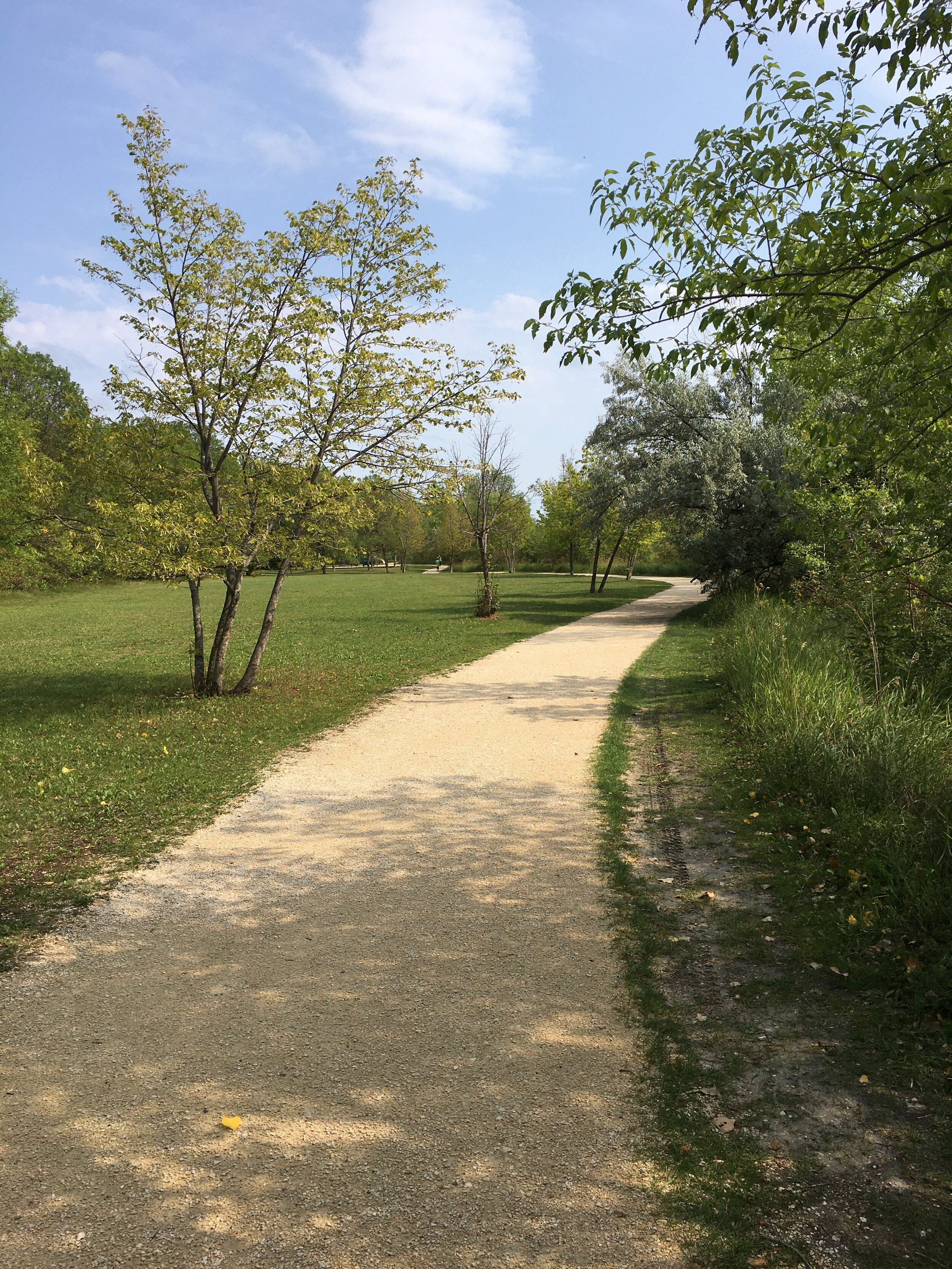My walk begins at Henteleff Park, not far from our house. For the past year, I’ve walked through it every day, and less consistently but still frequently in the years before. I’ve taken pictures of pretty skies, pretty grass, strange trees, and geese within its boundary. Walks have inspired colour palettes, landscaping ideas, and blog posts. The routine of has favoured the appreciation of seasonal change and small things. It refines a sense of noticing over time, rather than the vibrant impact of new.
Since the creation of the Henteleff Foundation in 2002, an interpretive center was added, a bathroom, a parking lot, a bulletin board and summer time employees. The bulletin board featured birds this year, and the announcement of hectares added to the park.
If you leave the wood chip trail you can find, near the dried-up Normand Creek, remnants of the park’s past inhabitants. The feeling that the park once hosted a family, and probably Métis before that, before the surge of its present-day organisation and volunteer efficiency, gives me a frisson of delight. It reminds me of one of my favourite parts of the book Treed by Ariel Gordon, in which she traces the history of the trees planted in Winnipeg and along her street and concludes: “This essay isn’t my answer; it’s an attempt to think through what it means to hold land on this scale, to shape it and change it. This essay is a windbreak - like those trees outside Alverna’s kitchen window, it is a gesture, an attempt to protect something. But make no mistake, the Arksey farm is on Indigenous land. And telling the stories of this piece of land is maybe only a gesture at reconciliation.” (p 225)
In spite of the organisation, the rallying of good efforts, the park still distinguishes itself as a wild area compared to the manicured properties of the condominiums that neighbour it on either side.
This year, the presence of summer workers is revealed with a crop of new signs, the steady work of invasive plant control and new trees and shrubs that have to be watered and protected with wire until established.
You know that you have left Henteleff Park when the wood-chip path becomes the small-gravel path and those giants from the new development of Normand Park come into view. There’s this lookout, a little apart from the path, that provides a clear view of the river. I’ve taken so many pictures from this spot…
The Normand Park trail features two playgrounds: a new one and an old one. The kids have played at both and it would take very little for me to tip into nostalgia.
The near-end of its trail snakes through a small forest that was so filled with cankerworms this spring, I once left the path to forge a new one along the less-treed river bank and almost ended up worse-off, sneaking through unfenced private-properties to find the trail again. The cankerworms then became quivering white butterflies who, for a short period, transformed this section of the path into a scintillating sight.
The Normand Park path ends here, or begins here, if you want. As an entry though, it is so discreet that I wasn’t surprised one day, when a woman walking her puppy told me that in the 30 years she’d been living in the neighbourhood, it was only in the past months that she and her husband discovered the trail.
Leaving it behind, the sound of traffic rushes to your ears, and you are back in the city. You know this because of the sidewalk, with its cracks and its weeds. And then, with a view of Tim Hortons, and maybe too the smell of its coffee and sugary pastries, it’s the almost-end of your loop.














